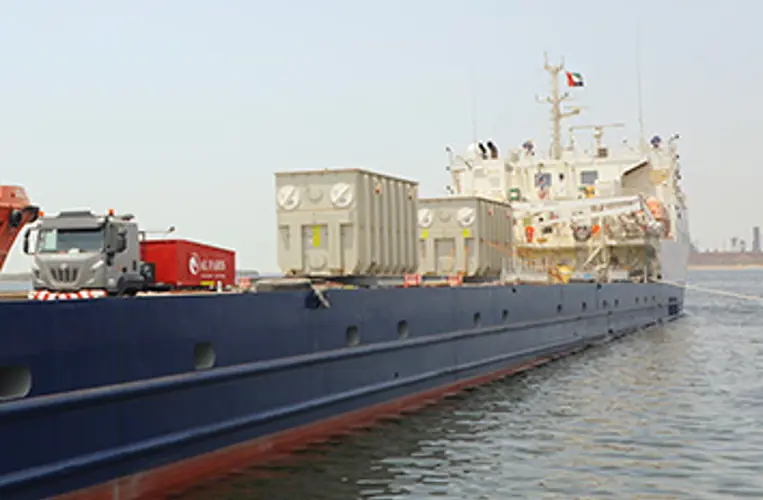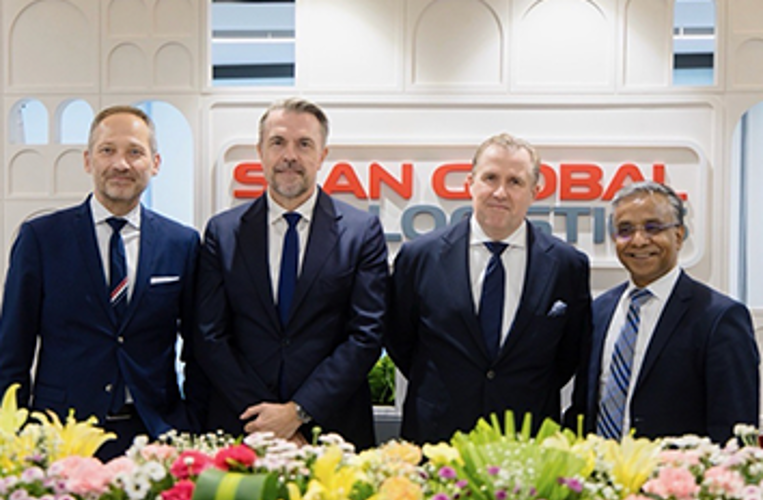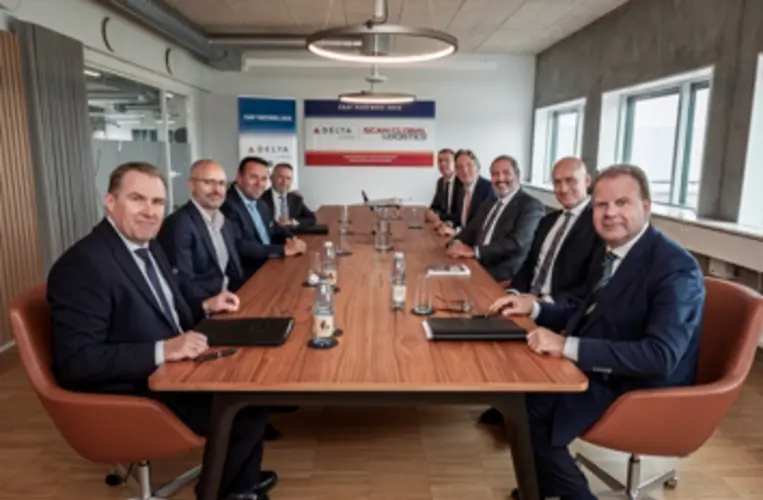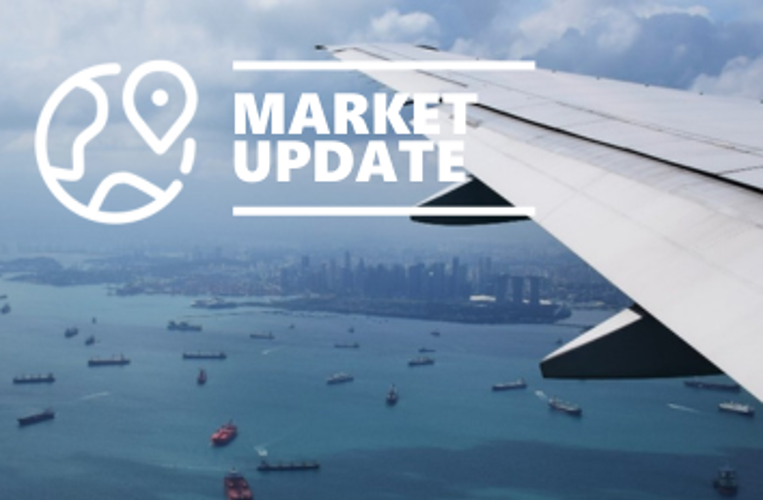On behalf of Scan Global Logistics

Global COO & CCO
Advisory
03 Jan, 2024

Following fresh attacks from Iran-backed Houthi rebels on Maersk Hangzhou, which luckily did not result in any casualties, Maersk on Tuesday, 2 January 2024, informed in a customer advisory that:
‘Following the 30 December incident involving our vessel, Maersk Hangzhou, we have decided to pause all transits through the Red Sea / Gulf of Aden until further notice. We appreciate your patience as we navigate this challenging situation.
An investigation into the incident is ongoing, and we will continue to pause all cargo movement through the area while we further assess the constantly evolving situation. In cases where it makes most sense for our customers, vessels will be rerouted and continue their journey around the Cape of Good Hope.’
This attack marks one of the most violent and bloody incidents so far, with US helicopters from the USS Eisenhower and USS Gravely sinking three Houthi vessels and killing 10 militants during the naval battle.
While much of the attention zooms in on the current situation's impact on global trade, then security for seafarers is paramount and crucial to consider when assessing this situation.
A photo published by Iranian-backed Houthis shows a helicopter approaching the ‘Galaxy Leader’s cargo ship in the Red Sea last month, just before the Yemeni rebel group seized the vessel. This photo provides a stark reminder that the risk of passing through the Red Sea is high and ever-present.

Source: Financial times
Carriers continue to adopt different approaches
With fellow Maersk 2M alliance partner MSC adopting a firm approach to passage via the Cape of Good Hope, this provides a prominent example of the inconsistencies shippers face. As much as there can be relevant reasons for a different risk assessment across carriers, the result is uncertainty on actual expected transit times.
Consequently, our clear recommendation remains to factor in previously announced extended lead times of 10-14 days on Asia-Europe and Europe-Asia due to most carriers now transiting via the Cape of Good Hope. As we speak, CMA-CGM and Cosco, to some extent, utilise the Suez Canal passage; however, here, it´s a fluid situation and not an entirely consistent picture.
It can be argued that choosing carrier solutions with a pre-defined passage around the Cape of Good Hope is most optimal from a reliability perspective. In contrast, carrier solutions via the Suez Canal promise shorter lead times but have a heightened risk of delays. In these cases, transit time can easily exceed that of carriers not utilising the Suez Canal, given vessels that have already entered the Red Sea only to turn back and use the Cape of Good Hope routing.
Below, you will find an overview of the three major ocean freight alliances:

Source: Wedoforwarding
Through our dialogue with our carrier partners, we assess that carriers that utilise the Cape of Good Hope routing as a minimum will continue with this for the next couple of weeks. Afterwards, the situation will be re-assessed as the allied coalition Operation Prosperity Guardian gains strength.
What is causing such a fragmented carrier approach?
On the surface, it can seem odd that container carriers within the same alliances can have different assessments of the risks of passing through the Red Sea - so what is causing this?
Here, we enter the realm of Geo-Political factors, vessel fleet size, national security, and trade interests, mixed into a commercial battle for market share among carriers.
Within the 2M alliance, it´s no secret that MSC is likely in a much better position to handle a situation where additional vessels are needed to service each string. As communicated previously, between 4 and 6 additional vessels are required on a round-trip from Asia to Europe and back to Asia due to the extended lead times.
In recent years, MSC has pursued an aggressive expansion of its fleet, positioning it firmly as the largest container carrier in the world, and it is consequently in a solid position to manage the current situation. Maersk has conversely focused investments on integrated logistics assets, with analysts suggesting that Maersk is simply struggling to maintain a full schedule in a scenario with extended lead times when utilising the Cape of Good Hope routing.
The fact that many Maersk vessels are US flag vessels also impacts the different assessments. Maersk likely enjoys higher priority within the coalition of Operation Prosperity Guardian, as evidenced during the attack on Maersk Hangzhou, where US Helicopters intervened and fought off the attacks. However, it´s also clear that US Flag vessels are targeted to a much higher degree, considering the US backing of Israel in the war between Hamas and Israel in the Gaza Strip.
In the case of CMA CGM, we know that the French navy has prioritised the escort of French cargo vessels and, as such, is not taking an active part in the coalition. While this provides CMA CGM with a clear advantage, recent attacks show that Houthi rebels are prepared to attack vessels being escorted, so this does not provide a fail-safe guarantee.
In the case of Cosco, there seems to be a consensus that rebels so far refrain from attacks on Chinese-owned vessels, prompting Cosco to utilise the Suez Canal passage. However, Cosco-owned carrier OOCL maintains the Cape of Good Hope routing, again cementing the fragmented picture amongst carriers.
UN Security Council to meet today on Red Sea situation
The UN Security Council will likely meet today, 3 January, at France's request. The French ambassador to the United Nations, Nicolas de Riviere, whose country assumed the council presidency, said on Tuesday:
‘It´s likely the council will meet on the issue sooner, probably even tomorrow. The situation is bad; there is a repetition of violations and Military attacks in this area.’
It is considered that France will push for a firmer approach as part of Operation Prosperity Guardian, which by nature is currently a defence coalition. However, it is at the same time considered that the USA is cautious about preemptive measures in the form of land attacks on Houthi rebels due to concerns about the repercussions this can have in the current Middle East conflict.

Source: Arab News
Iran enters the Red Sea arena with tensions rising
As proof of the rising tensions, on 2 January, Iran announced it would dispatch a naval frigate to the area. In other words, we now have a stand-off between Western nations and Tehran-backed militants.
According to Politico, Iran’s Tasnim news agency reported Monday that the warship Alborz crossed the Bab el-Mandeb Strait and entered the busy waterway, where a U.S.-led coalition is already stationed. According to Iranian officials, the 51-year-old vessel, initially sold to the Shah of Iran by Britain, will supervise naval missions in the Indian, Pacific, and Atlantic oceans.
With the Red Sea area and Houthi rebels having been the focus of the shipping and logistics world during recent weeks, you can see below the exact location controlled by Houthi militants very visually displaying the narrow Bab el-Mandeb strait.

Source: Politico
What to expect in the coming weeks
As highlighted in our previous communication, there is no indication that this situation will be short-lived, and tensions seem to be rising. We accordingly maintain that both pro-longed transit times and elevated freight rate levels are here to stay short and mid-term.
While the capacity situation at present is not critical, and we can find solutions, there are clear indications that available space is tightening. We expect this will accelerate in the coming weeks. It is premature to speculate on further effects from the current challenges; however, if the current situation remains as-is, landside bottlenecks in port congestion and equipment availability will be additional threats impacting the supply chain flow.
The SCFI rate level increase referenced in our latest advisory represents the most significant week-on-week increase in recent history. It is another marker of the gravity of the situation, and we will dig deeper into this in our next advisory to be published on Friday.
We also remind you that, as seen during the COVID-19 pandemic, global container trade is interconnected, and ripple effects are already apparent in trades that, as such, are not related to the Suez Canal passage. This will likely affect available container equipment and freight rate levels on these trade lanes due to the change in supply and demand.
To get a complete overview of the latest development across key global trade-lanes see below – note below definitions:
Green: Capacity open
Yellow: Tight capacity
Red: Critical capacity
OCEAN FREIGHT



AIRFREIGHT



Our teams are working around the clock to keep you duly informed both in terms of potential delays and, not least, in terms of alternative solutions.
All the above information is given to the best of our knowledge and is subject to change.

On behalf of Scan Global Logistics

Global COO & CCO









